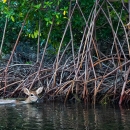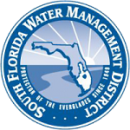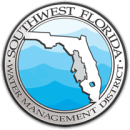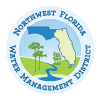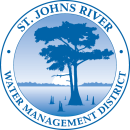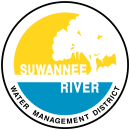Coastal areas are vitally important to fish and wildlife, supporting 40 percent of the Service’s National Wildlife Refuges, 40 percent of the Federally-listed endangered species, 50 percent of the Service’s fisheries activities, 25 percent of the Nation’s wetlands and at least 30 percent of North American wintering waterfowl.
Coastal Program
The U.S. Fish and Wildlife Service's Coastal Program is a voluntary and non-regulatory program whose mission is to efficiently achieve habitat conservation through financial and technical assistance for the benefit of threatened and endangered species, as well as those being considered for Endangered Species Act protection. Funding from the Coastal Program is used to leverage additional partners and resources for the restoration of wetlands and uplands on public and privately-owned lands.
Coastal Program Grants
The Coastal Program awards grants to implement restoration efforts. Highest priority projects are those that restore native habitat and provide long-term benefits to at-risk and Federal Trust Species. At-risk species are species proposed or petitioned for federal listing, but whose status is still being evaluated (i.e., we are trying to avoid the need to list them).
Please feel free to reach out to one of our contacts listed below to learn about our program. Coastal Program staff also help coordinate and plan large-scale restoration efforts and strengthen relationships with partners. Examples of common project types include:
- Gulf oil spill project development and coordination
- Restoring saltmarshes, freshwater wetlands, and springs
- Coastal upland restoration
- Conservation land acquisition and enhancement
- Living shoreline projects
- Facilitating large-scale restoration partnerships, such as Northeast Estuarine Restoration Team (NERT) and East Coast Estuarine Restoration Team (ECERT)
We emphasize Living Shorelines (LSLs), a more natural shoreline protection approach that can include salt marsh salt marsh
Salt marshes are found in tidal areas near the coast, where freshwater mixes with saltwater.
Learn more about salt marsh , seagrass, oyster reef, tidal flat and dune habitats. These important components of the coastal environment perform valuable ecological services such as nutrient cycling, sediment stabilization, wave attenuation and nursery and foraging habitat for fish and invertebrates. Living Shorelines improve water quality, create habitat, and enhance natural processes.
As shoreline hardening and Living Shoreline (LSL) construction has increased around the coastal areas of Florida, so has discussion about what a "living shoreline" is or should be.
What are LSLs?
LSLs are shoreline protection construction projects that provide habitat for plants and animals through careful consideration of the site and strategic placement of components along the entire upland-to-wetland profile. We make a point to incorporate the upland elements in our project wherever possible.
The National Oceanic and Atmospheric Administration (NOAA) refers to “limited use of rock,” and provides the following two descriptions of LSLs:
- “NOAA is working to implement a more natural bank stabilization technique called ‘living shorelines.’ This approach uses plants, sand and limited use of rock to provide shoreline protection and maintain valuable habitat. Living shoreline projects utilize a variety of structural and organic materials, such as wetland plants, submerged aquatic vegetation, oyster reefs, coir fiber logs, sand fill and stone.”
- “NOAA is working to implement a more natural bank stabilization technique called “living shorelines.” This approach uses plants, sand and limited use of rock to provide shoreline protection and maintain valuable habitat. Living shoreline projects utilize a variety of structural and organic materials, such as wetland plants, submerged aquatic vegetation, oyster reefs, coir fiber logs, sand fill and stone.”
There could be as many definitions of LSLs as there are LSL projects. Our focus is on shoreline stabilization techniques that use native and natural materials, may provide suitable treatment for eroding coastal shorelines that experience low-to-medium wave energy (e.g., bays, bayous, lagoons) and should meet the criteria for most, if not all, LSL definitions.
Why Use the LSL Approach?
LSLs are a shoreline treatment, a management tool to ensure that our bays and estuaries and property function naturally and are sustained. No one is suggesting that LSL projects should be constructed on existing naturally-functioning shorelines. Do nothing is always the first approach to consider. Shorelines erode and accrete over time. If fixed structures in dynamic habitats weren’t built, there probably wouldn’t be as much concern about shoreline erosion. But shoreline development continues so when “do-nothing” and allowing shoreline retreat are not options, a more natural approach to shoreline stabilization is preferable to shoreline hardening.
Why not just keep hardening our estuary shorelines in Florida?
Shoreline hardening interrupts natural shoreline processes, reduces nursery habitat for marine species and foraging habitat for wading birds and degrades water quality. Vertical seawalls and associated shoreline armoring designs can actually increase erosion processes. They can also create a bathtub effect with an abrupt transition from deep water to dry land that eliminates the inter-tidal zone where many marine and estuarine species live. How do shorelines end up with so much hardening? Largely by decisions made one by one by individual property owners. It’s a domino effect and we end up with “death by a thousand cuts” for natural shoreline habitat and resulting declines in our estuaries.
Seawalls turn the gradually sloping profile into a right-angle bathtub effect with limited habitat. Seawalls can also increase erosion on adjacent property beyond both ends and they are often the shoreline protection option selected to “hold-the-line”.
Natural shorelines, already performing their natural functions without any help from us, should not be replaced with construction projects. Shorelines are naturally dynamic environments, and “do nothing” is the first option to be considered when faced with an eroding shoreline. However, most folks are seeking solutions to the loss of their property in the face of erosion, so “do-nothing” is not an option. Sea level rise compounds erosion problems by changing the location of the coast line and exposing new areas to erosion. LSLs offer the most environmentally friendly options for doing something.



